Last updated on 18th June 2024
At Project.co, we know a thing or two about agencies.
In fact, Project.co was built to help us run our video agency, Wyzowl. Wyzowl is one of the world’s leading creators of animated explainer videos.
As with many creative projects, creating an explainer video is a big task – with lots of people involved on both sides.
We needed a reliable project management tool that would allow us to keep all messages, tasks, files, and payments in one easily accessible place – but we couldn’t find one that worked for us.
So we decided to create our own. And Project.co was born!
Every minute your team spends on monotonous admin tasks could be spent on project work, helping to improve your agency’s overall productivity and profitability.
In this guide, we’re going to break down everything agencies need to know about project management, and give you some top tips on how to manage your projects better, with Project.co.
1. Put a process in place
In order for every project to be a perfect project (or as close as you can possibly hope for!), you need to put a process in place that is scalable and repeatable.
A clear step-by-step process for each project to progress along, almost like a production line line, will help your team to become more familiar with what’s expected of them every time – and hone their project management skills!
For Wyzowl, we’ve split the explainer video process into four stages:
– Copy
– Design
– Animation
Each team member knows exactly what is expected at each stage and how long everything should take (on average).
We also have a handover process when a project moves onto the next department. For this, we use the notes section in Project.co. As you can see here, the script has been signed off and the project is moving forward to the design stage.
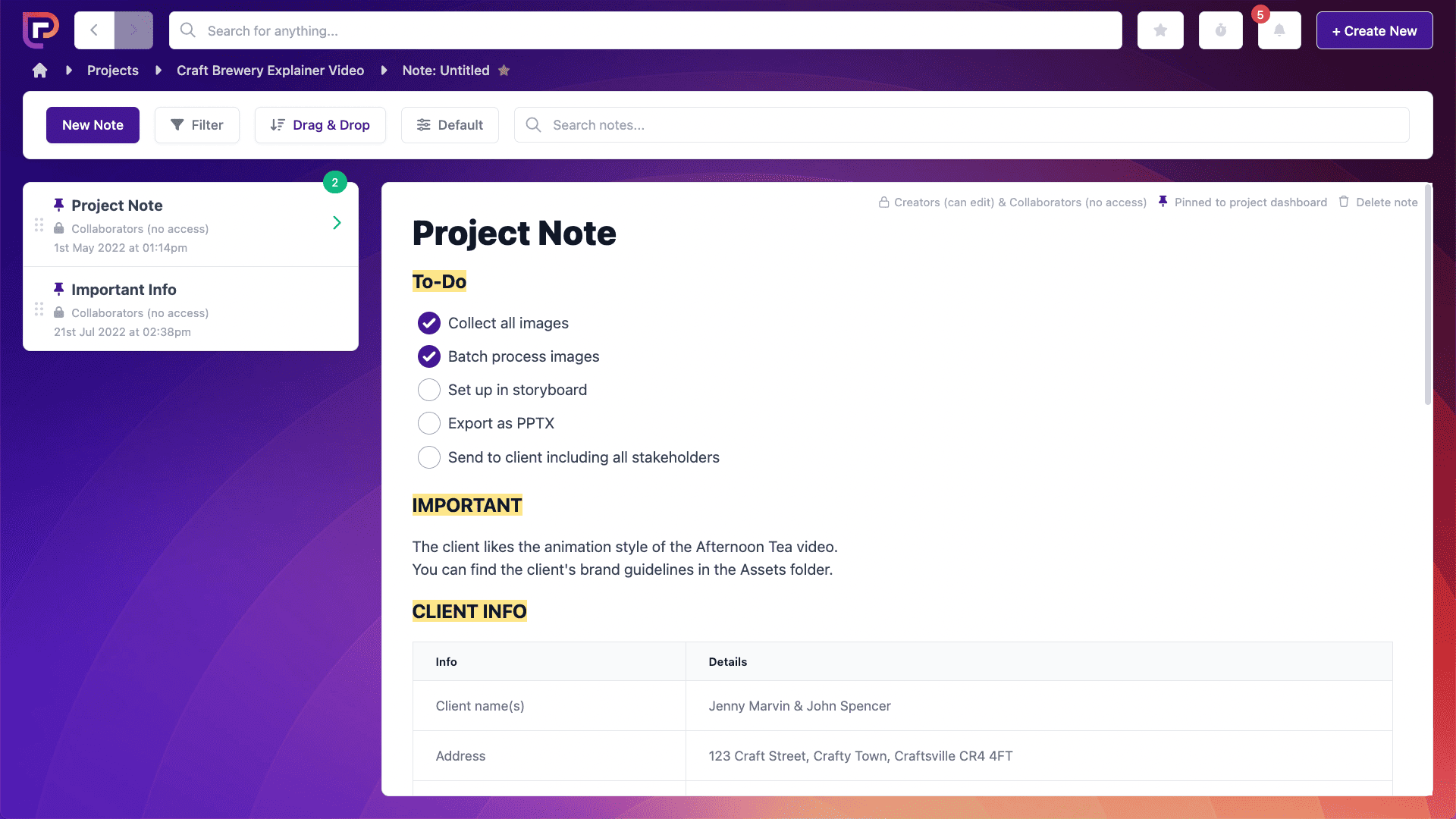
The scriptwriter has included all of the information required for the designer to get started, and has also put a task on for the design team:
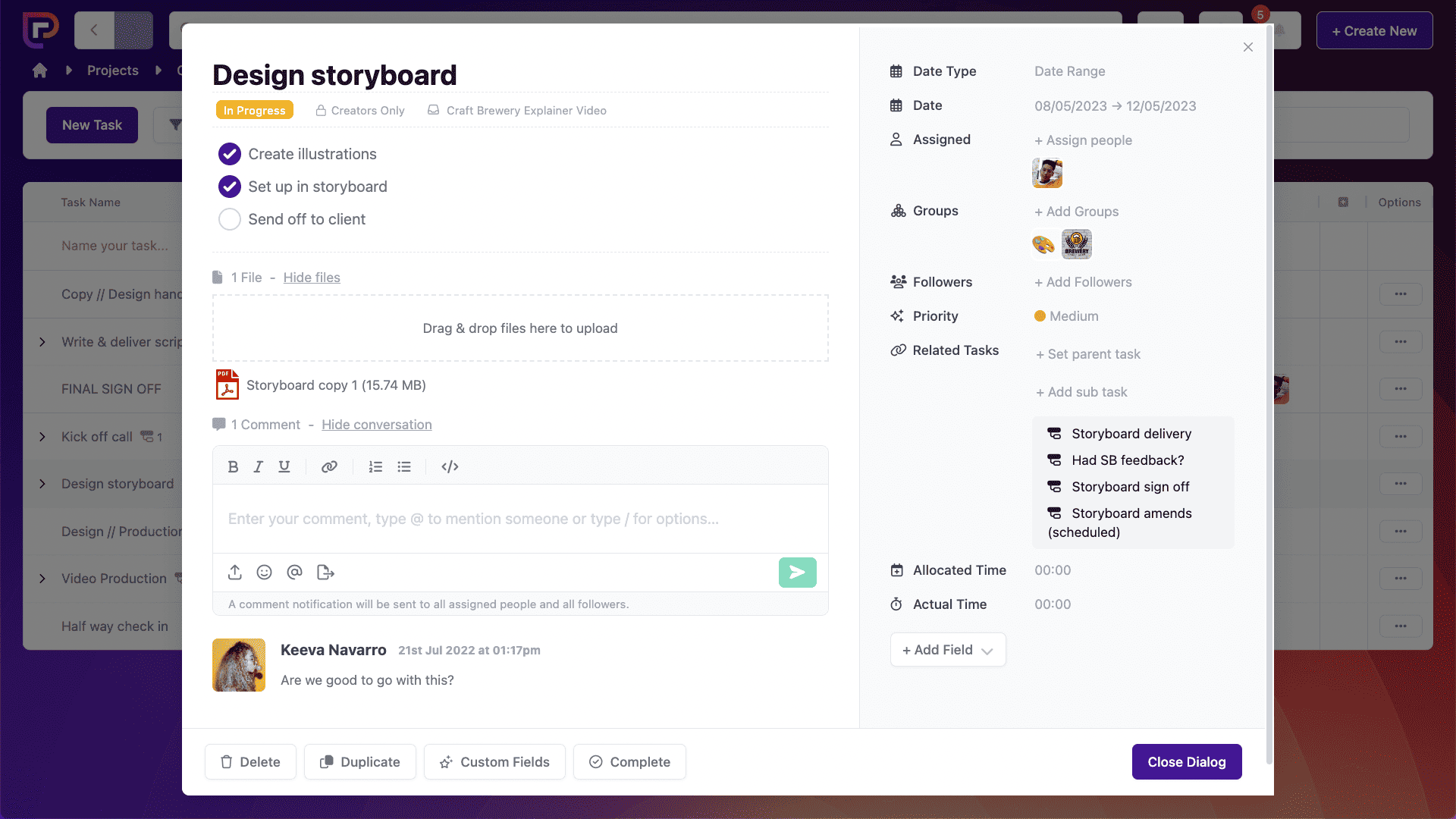
If your projects run on for several weeks or longer, and involve multiple departments, clients can often get nervous with where things are up to. Having a clear and solid process like this will help to reassure your clients.
You can tell them exactly what’s happening at each stage, how long you expect that to take based on previous projects, and also what they can expect next.
2. Implement communication guidelines
Happy clients = successful projects.
In order to ensure that all of your clients are happy, you need to focus on more than just a high standard of work.
Effective communication is important for building a rapport with your clients and can be the difference between them having an ‘okay’ experience with your agency and an excellent one.
This can be rectified with a clear set of communication guidelines.
Communication guidelines will help your staff understand how to best communicate with clients, and deliver a consistent and exceptional customer experience.
We have a document that we give to all of our team members when they start working for Wyzowl. Here’s a snippet:
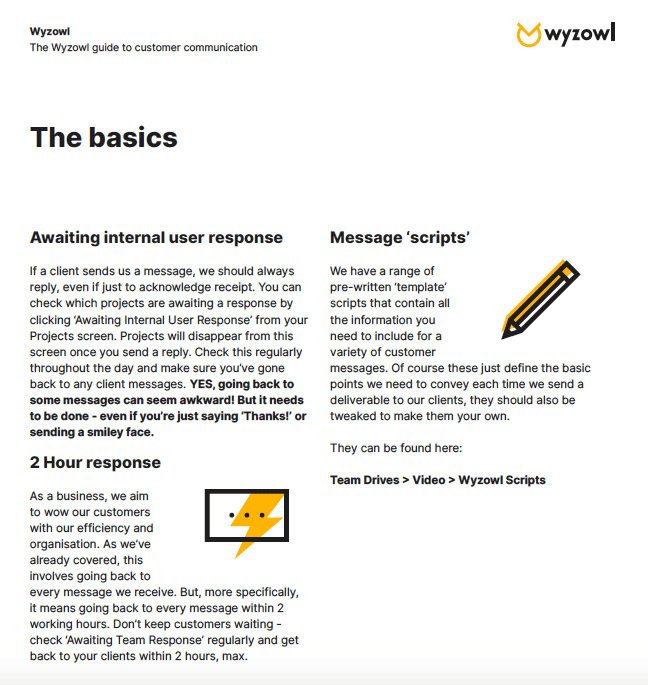
On this page, we tell people how to find projects that are awaiting a response within Project.co and when to reply to clients.
We’ve set a standard that all of our messages must be responded to within 2 hours – this ensures that our clients are never waiting too long for answers to their questions.
We’ve also written script templates for certain scenarios that come up repeatedly. For example, sending the first draft of a video.
We find that this ensures our clients always get the same awesome experience no matter who they talk to on our team.
However, it’s important to note that these guidelines are exactly that – guidelines. If your team sticks to the guidelines too firmly then messages from your team could sound stale and robotic.
3. Set communication channels
In addition to having a strong set of communication guidelines for your team to refer to, it’s also important to be clear on what communication channels you use.
Back when email was the only option, it made sense for people to communicate this way. But now we have chat apps, project management tools, video conferencing, and more.
If everyone uses a different tool then it’s highly likely that messages will become confused, miscommunicated, or lost – and this is catastrophic for customer service.
It’s a good idea to set a standard of communication channels across your business:
– One for project-specific communication
– One tool for video calls
Here are some tools that we find useful…
1. Slack (for internal communication)
Slack is like email, only better. It allows you to chat with anyone in your agency, instantly. You can even see when they are typing a response:
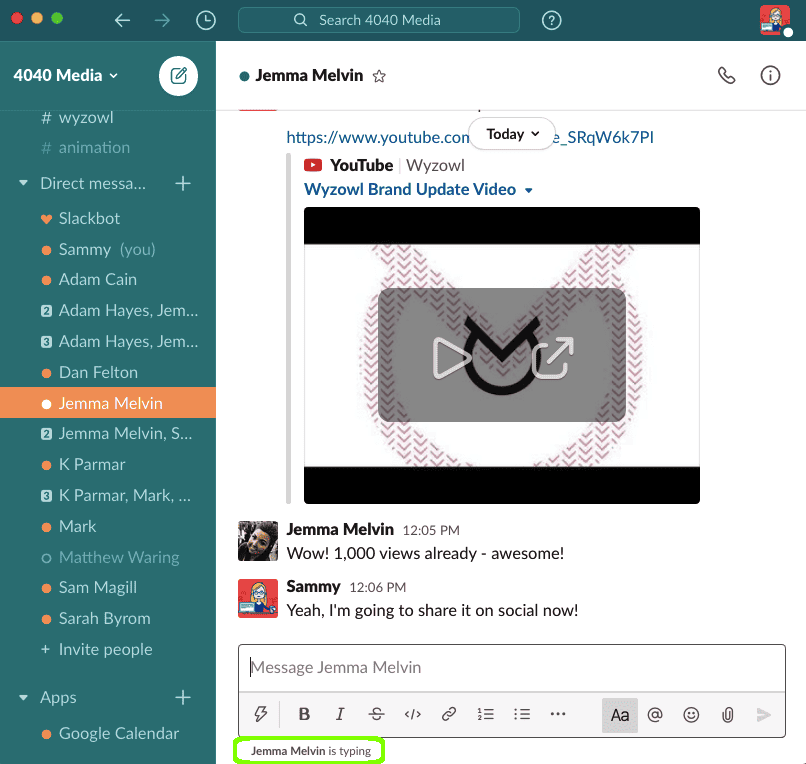
You can also create channels, to keep conversations about certain topics in a specific place. For example, we have an inspiration channel that we use to share interesting content we find:

You can also link it to your Google calendar to be notified of any upcoming meetings for the day:

2. Project.co (for project communication)
Unsurprisingly, we think everyone should be using Project.co for project communication. It’s simple to add members from your own team and your clients to the platform. You just head to the people tool on the project and click Add People:
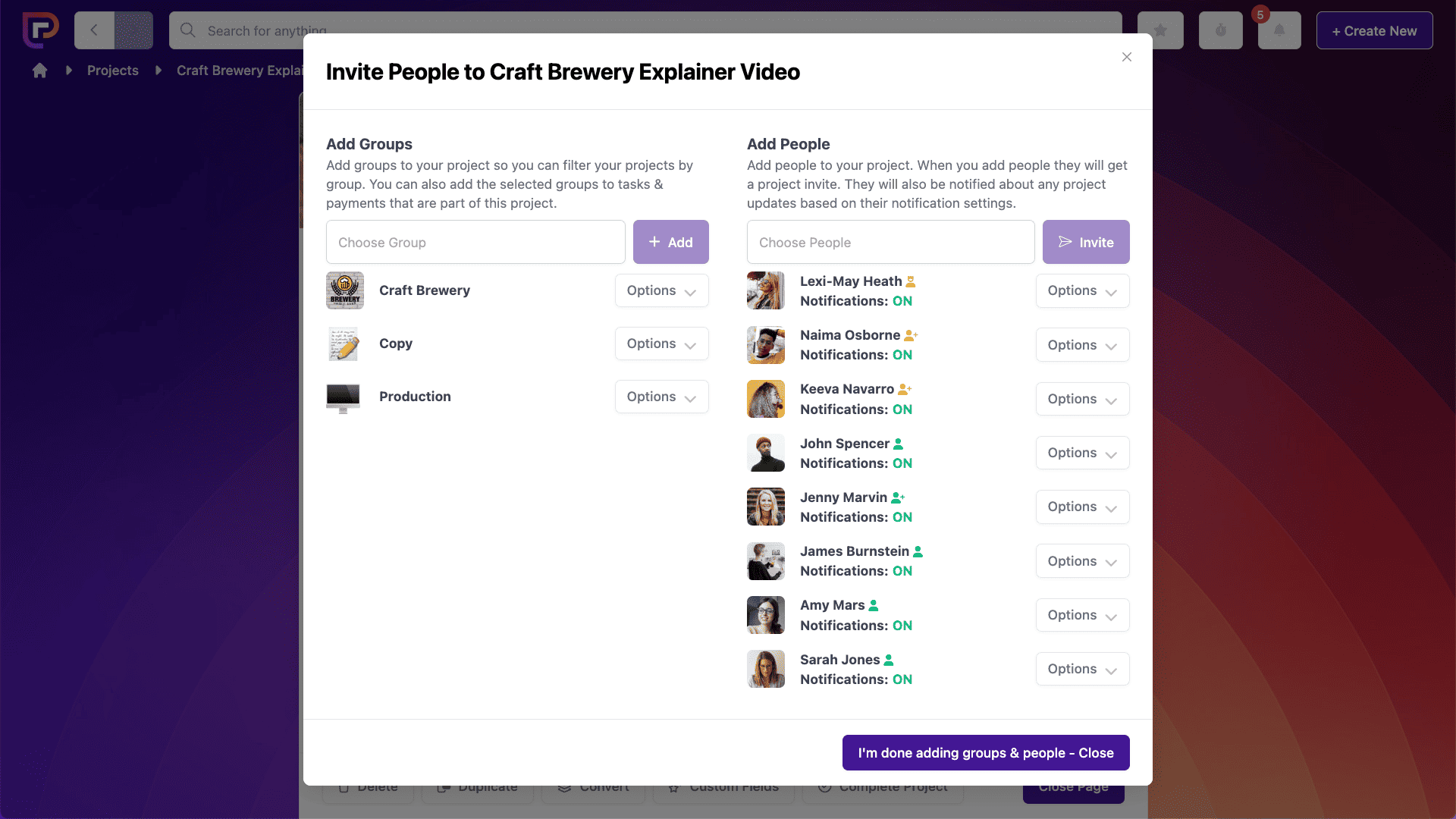
The discussions tool keeps all communication in one, date-ordered view. So it’s easy to see where projects are up to. This is great for when team members are unexpectedly out-of-the-office, as it eliminates the need to go trudging through their emails to find information.

According to our Communication Statistics, 55% of people have missed messages as a result of communication issues in their business
3. Google Meet (for video calls)
Google Meet is a video conferencing tool that’s great for organising meetings with multiple team members, and also with clients.
It’s really easy to host a meeting. All you need to do is click New Meeting, select whether you want the meeting to start now or later and you’ll be given a unique link, dial in code, and PIN to share will all participants.

All participants have to do is click on the link and start chatting! You can even share your screen and record calls via Google Meet.
4. Keep everything in one place
As an agency, you probably have a lot of plates to spin. You’ve not only got to manage projects, but team members, clients, payments, sales, internal marketing projects…the list goes on!
When you have a lot of different things to manage, one simple solution that can help is keeping everything in one place.
By using a project management tool, like Project.co, you can be confident that everything is exactly where you need it to be – and you can get up-to-date on your projects at a glance!
The projects tab shows you all of your current projects.
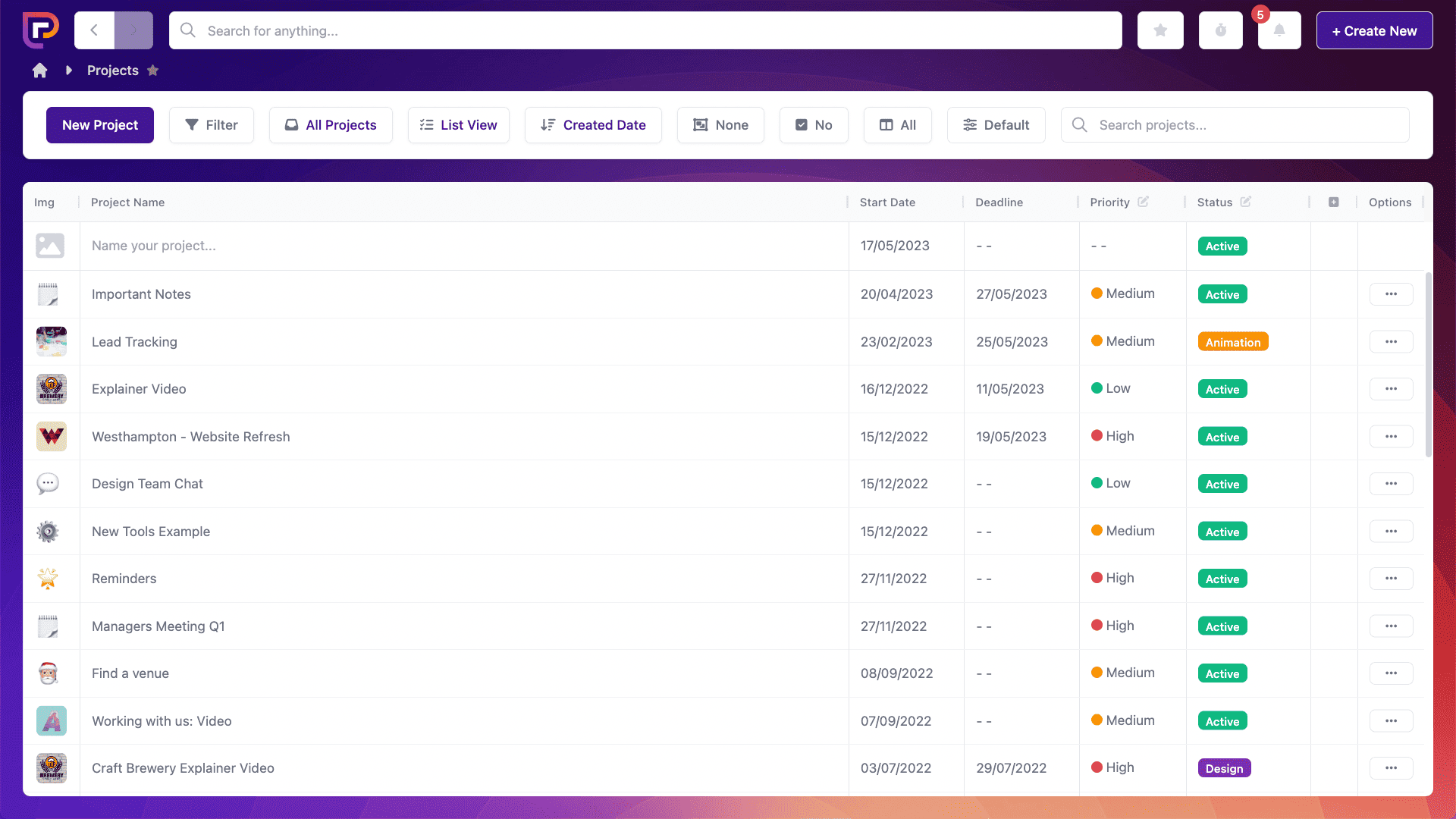
You can also simply search projects by name, for even more convenience.
Similarly, the tasks tool shows you what tasks you need to deliver, and when.
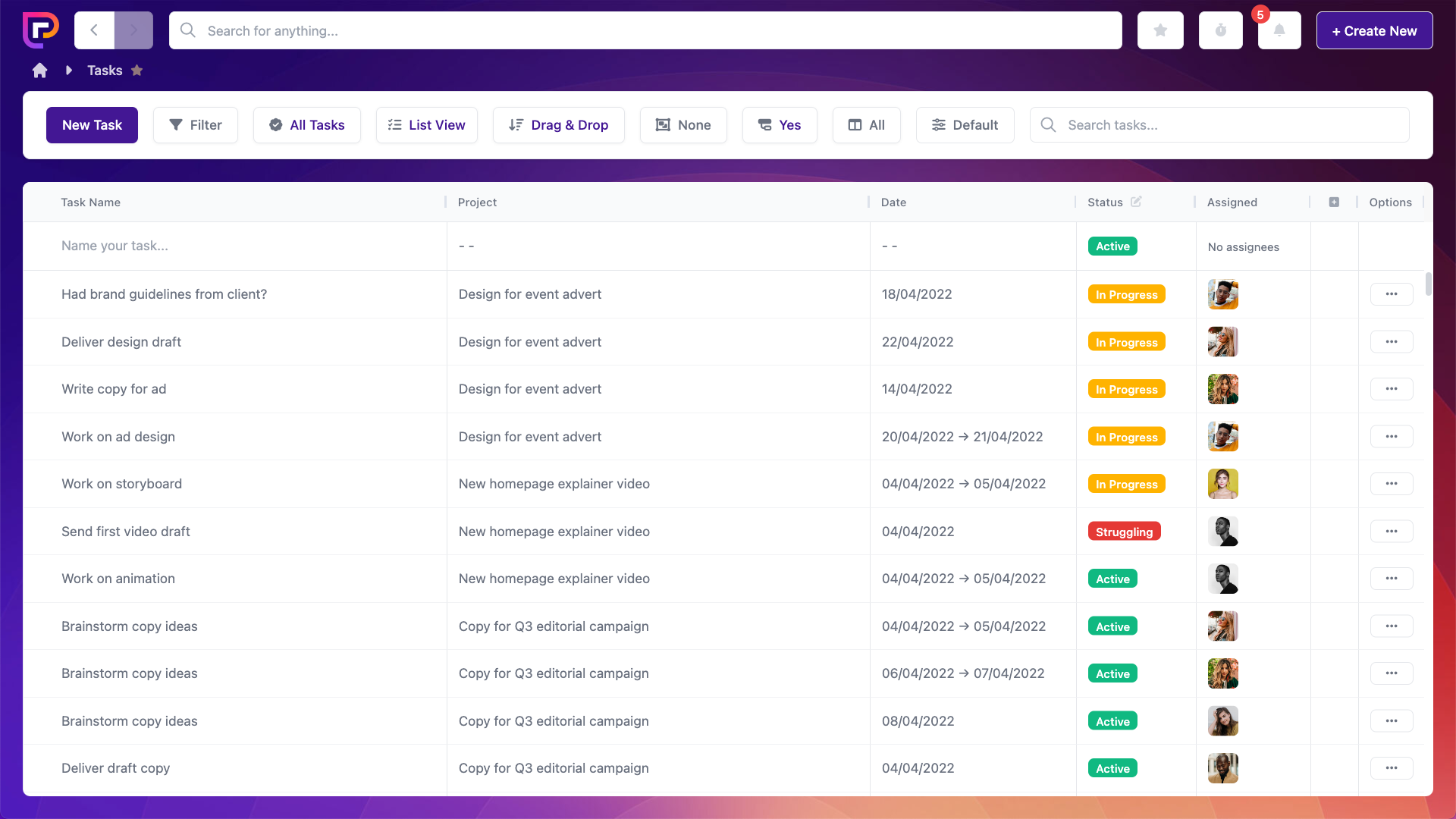
You can also filter tasks by team member, or click on the scheduler view to see what other members of your team are working on.
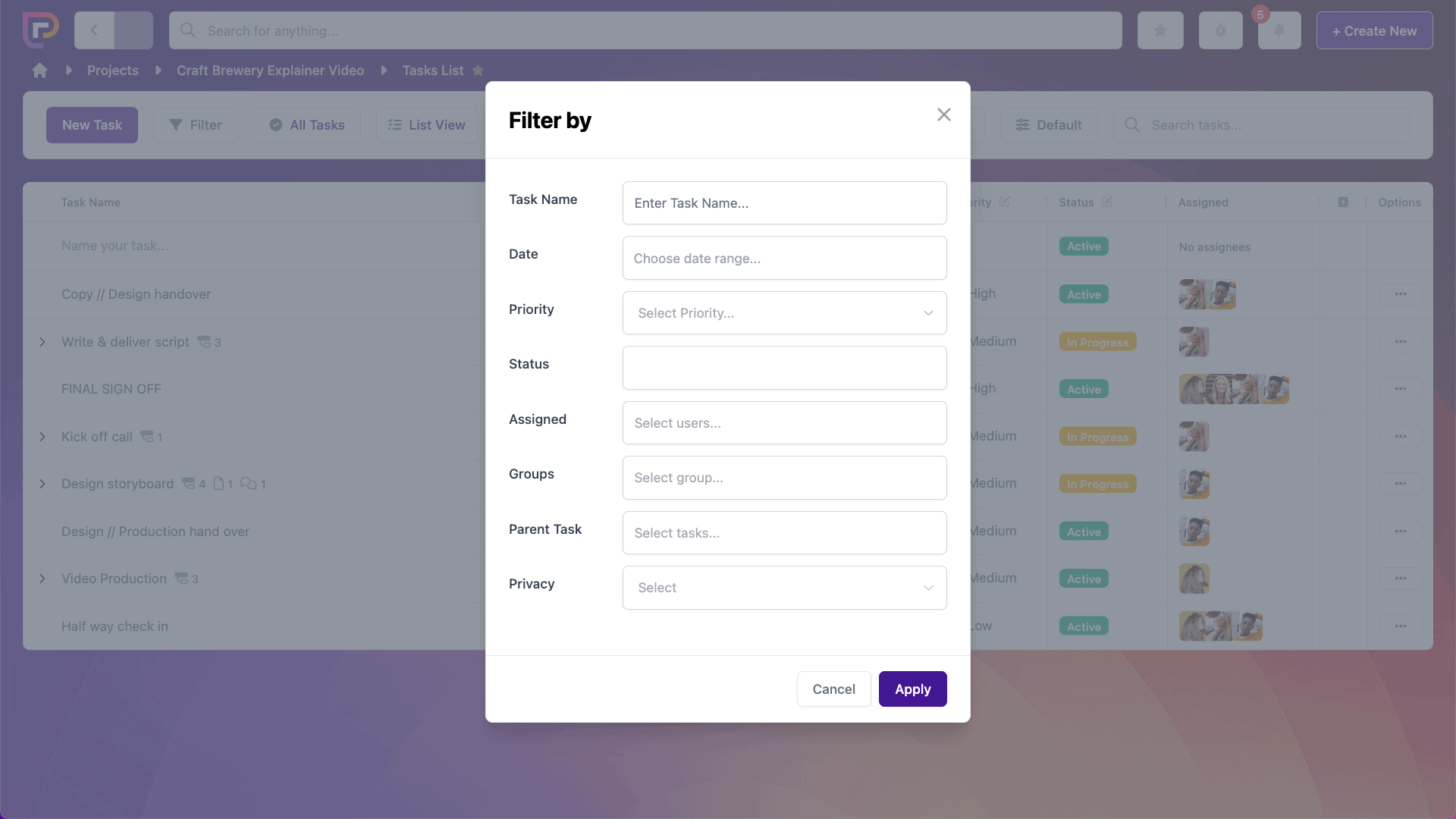
5. Ensure roles are clearly defined
To ensure every single project runs smoothly, the project scope – including everyone’s roles – must be decided on before you start.
This will help you to understand who is accountable for what, when the deliverables are due, and where the important information will be kept.
The kanban view on Project.co is a great place for visualising your project from start to finish:
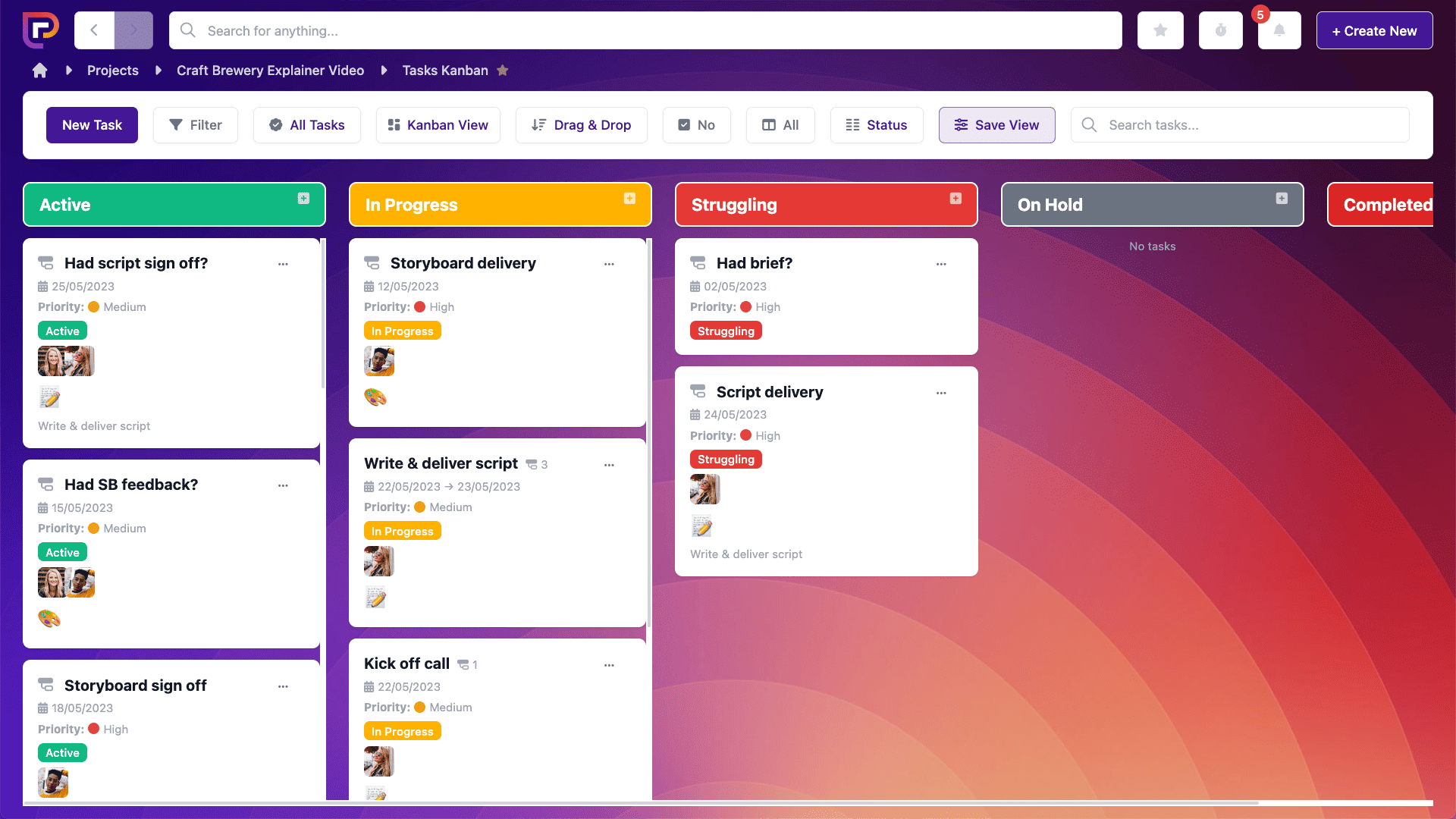
Tasks can be dragged to different stages in the process so that everyone can see where the project is up to, including what needs to be completed next.
As mentioned above, we use the notes section of Project.co to include any important details for the next member of the team:

As part of our handover process for our explainer videos, we also put a task on for the next person in the chain so that they can review the project before they start work.
6. Encourage collaboration
Team collaboration can be a great way to elevate the quality and efficiency of your projects. By encouraging your team to share constructive criticism you can ensure that every piece of work you present to clients is the best it can be.
However, when you’re reviewing and redrafting work you can end up with many different versions. This can get confusing if someone accidentally gives feedback on version 4, when the latest version is actually v10!
There are some tools you can use to combat this. We like Google Drive because it allows members of the team to edit and comment on files in real-time:
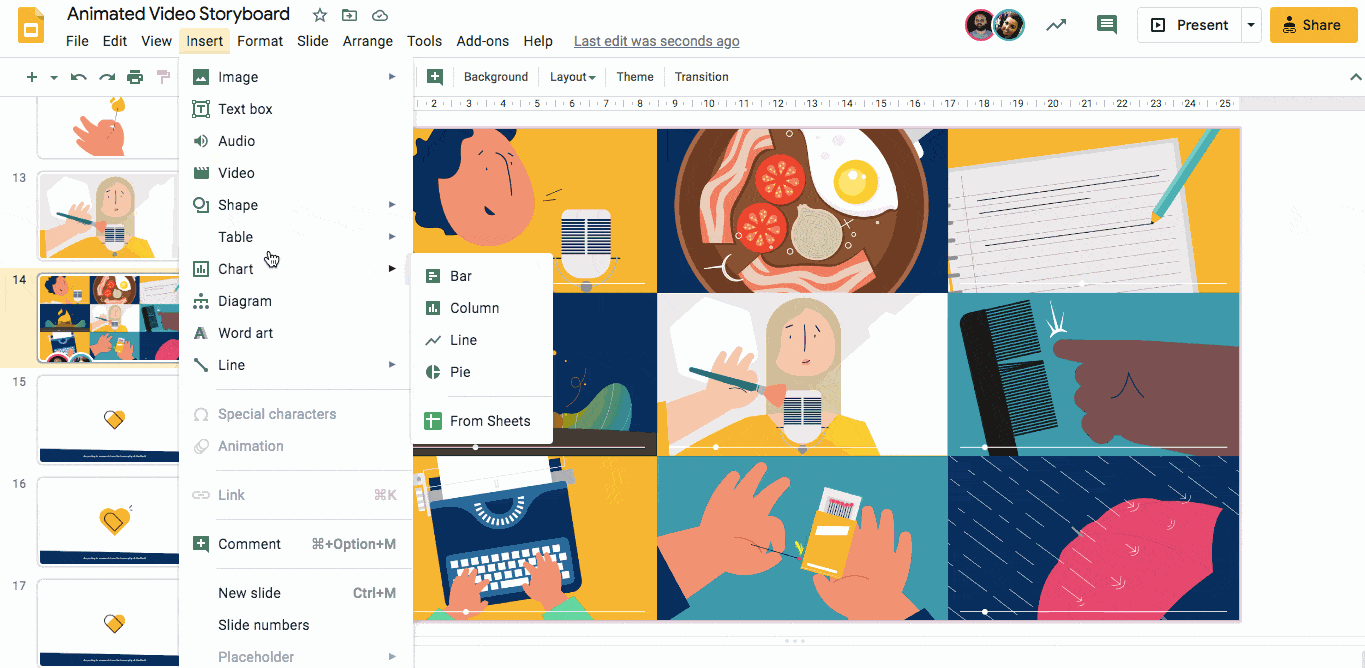
This real-time collaboration prevents the need for several versions, which could make your projects messy, confused, and even delayed.
With the Project.co embeds tool, you can collaborate on your documents without ever leaving the platform. This further ensures that you have a clean working environment with no confusion over which document is the ‘live’ one.
Any clients that have been added to the project can also use the embeds tool to leave their feedback.
7. Manage your workload
When running an agency, particularly if you’re new and trying to grow, it can be tempting to focus on sales, sales, sales.
But too many projects could overwhelm your team. Meaning they can’t do their best work. Meaning clients aren’t as satisfied as they could be. Meaning less sales in the future. It’s a vicious cycle!
Project.co can help managers effectively manage their team’s workload and capacity.
The task list gives you a complete view of everyone’s work. And if you switch to scheduler mode then you can see this all on one screen:
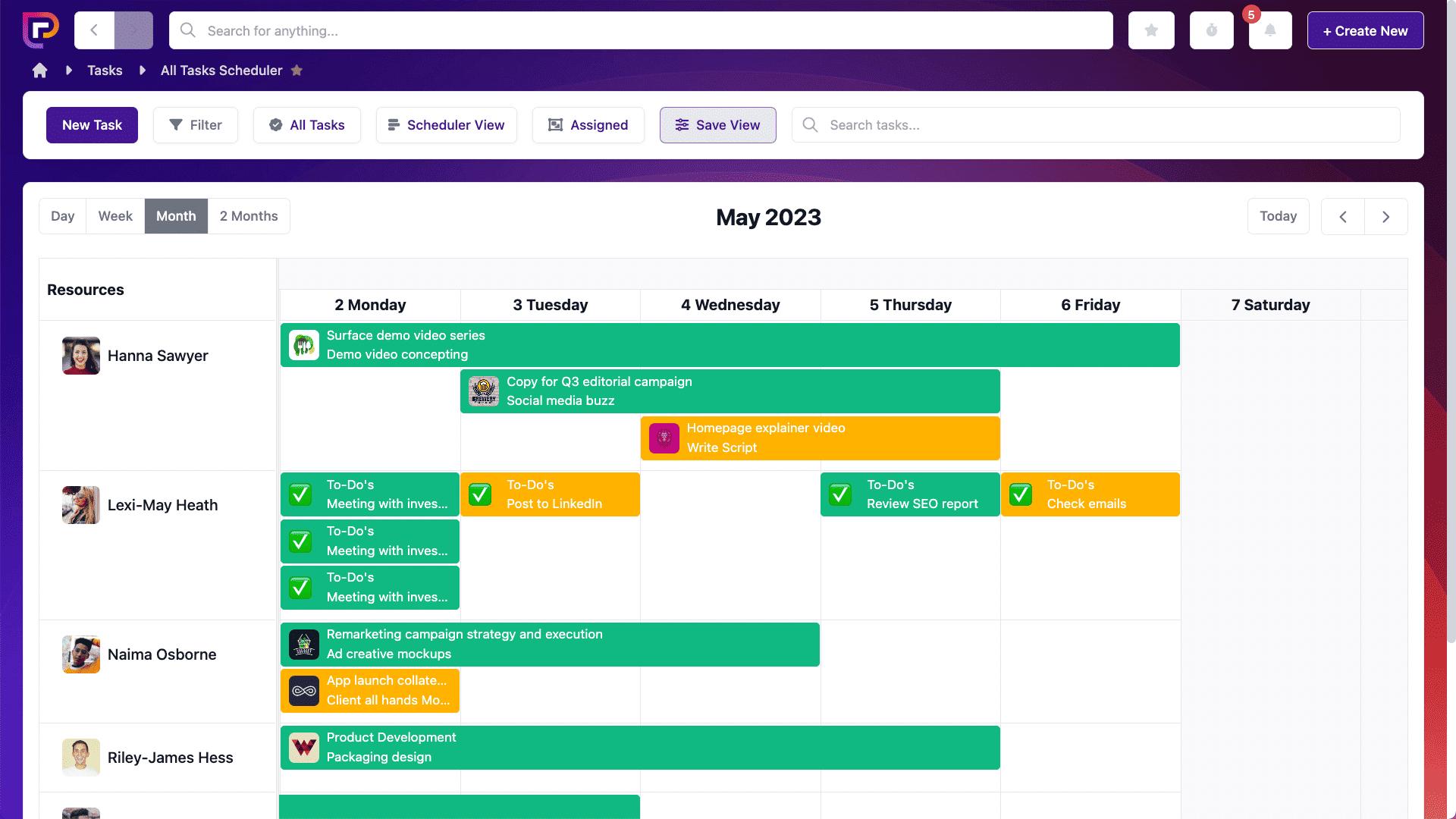
This makes scheduling work a lot easier, because you can quickly see who has lots of work on their plate and who has capacity to take on more.
Within the tasks, in addition to assigning names and dates, you can even set statuses and notes to make the requirements for each project clearer, or help you organise your project in your own way.
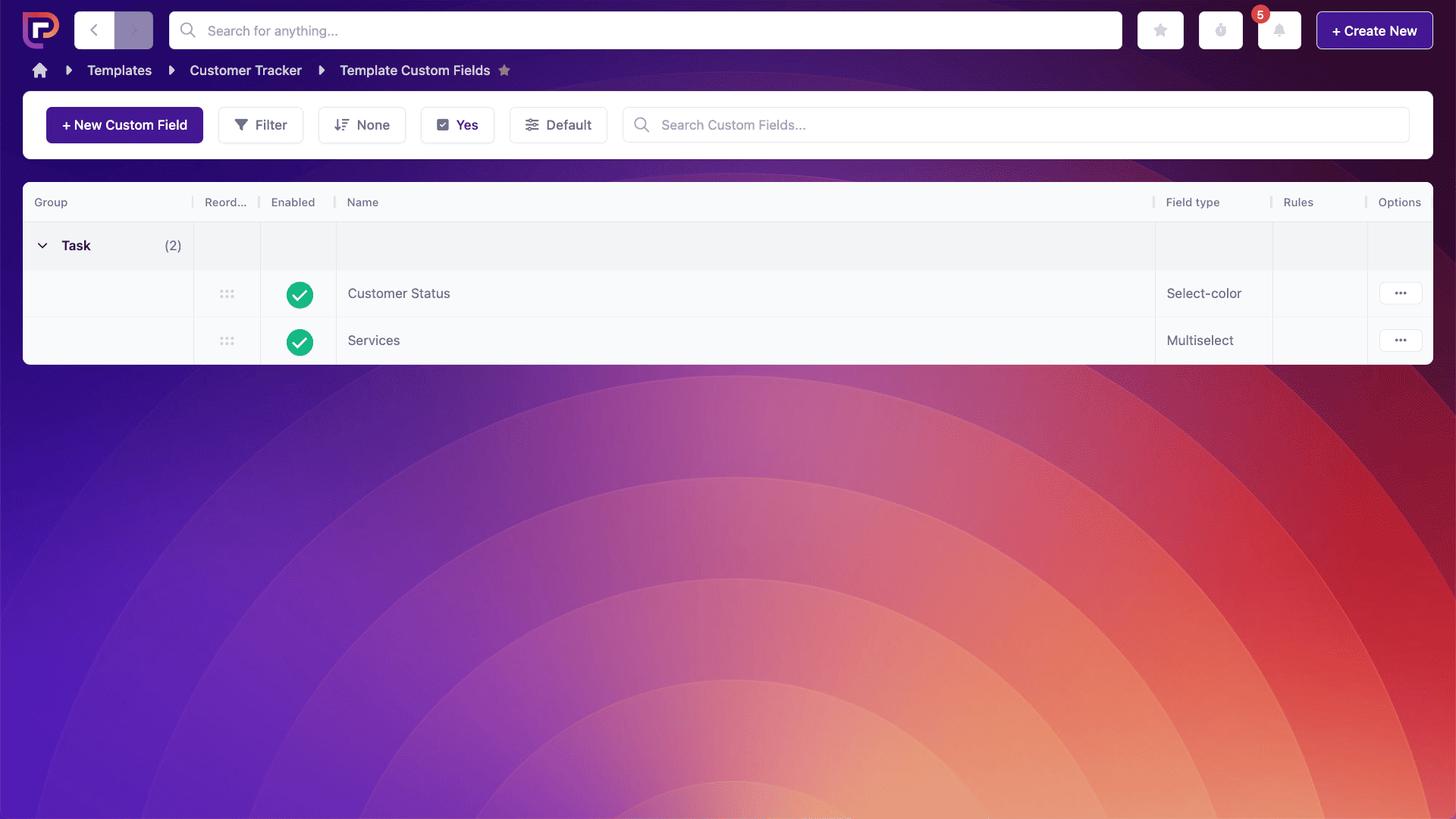
We have many free templates on our site that come pre-built with specific tasks. Check them out to see if one is a perfect fit for your agency: Free Templates.
9. Track your efficiency
For many agencies, time means money. So a crucial aspect of project management must be recording time and tracking efficiency to ensure that projects are as profitable as they can be.
This data can be invaluable for making important decisions about the future of your business. For example, you could find out that some projects are draining time and being priced too low, while other projects are super profitable.
To help with time management, Project.co has a time feature that allows you to track the time spent on each project, by each team member:
You can even add allocated times to each project so that you know how much time you can spend on a project before it starts to become unprofitable. This can help you to set goals that ensure you meet these targets.
10. Celebrate success
It may not sound like it can contribute to project management, but celebrating successes with your team is a great way to boost team morale.
So be sure to celebrate successes every now and then, no matter how small. Team lunches and gift cards are a great way to say thank you to your team for a project well done!
Final thoughts
Project management can be tough, but the satisfaction of completing a project and bagging one more happy customer for your agency is so worth it!
A lot of project management headaches can be resolved with the help of a solid project management tool.
When people use an online tool to manage their projects they’re twice as likely to rate their levels of efficiency, communication, and organisation as ‘excellent’.
Why not give Project.co a spin and see what it can do for your agency?




